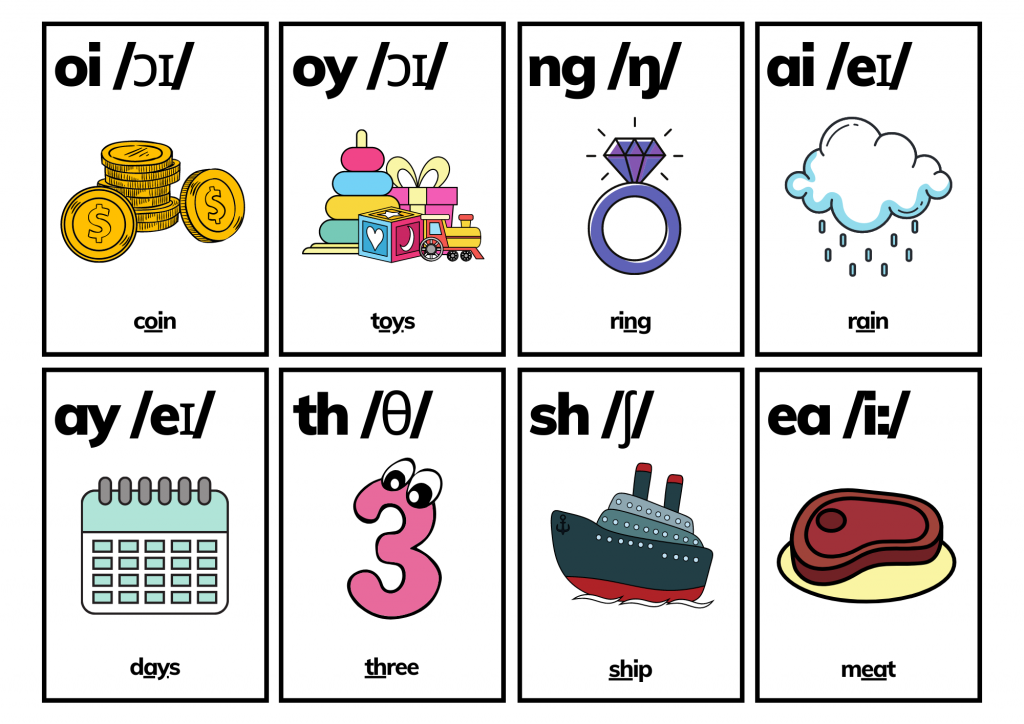
Introduction To Phonetic Symbols (2)
Phonetic symbols are essential tools for understanding and transcribing the sounds of a language. In English, these symbols provide a standardized way to represent specific sounds, allowing us to study and communicate about pronunciation accurately. This article, “Phonetic Symbols (2)” explores six commonly used phonetic symbols: /ɔɪ/, /ŋ/, /eɪ/, /θ /, /ʃ /, and /iː/. We will uncover their unique sounds, provide examples, and discuss their importance in spoken English.
Phonetic Symbols: The Sound /ɔɪ/
The phonetic symbol /ɔɪ/ represents a diphthong, which is a combination of two vowel sounds. It is found in words like “boy,” “toy,” and “voice.” To pronounce /ɔɪ/, start with the /ɔ/ sound as in “caught” and gradually transition to the /ɪ/ sound as in “sit.” Together, they create the /ɔɪ/ sound.
Phonetic Symbols: The Sound /ŋ/
The symbol /ŋ/ represents the sound known as the “ng” sound. It is found in words like “sing,” “long,” and “ring.” This sound is a nasal consonant that occurs at the end of a word or syllable. To produce /ŋ/, the back of the tongue contacts the soft part of the roof of the mouth, allowing air to pass through the nose.
Phonetic Symbols: The Sound /eɪ/
The symbol /eɪ/ represents another diphthong sound. We can find it in words like “say,” “way,” and “make.” To pronounce /eɪ/, start with the /e/ sound as in “bed” and glide towards the /ɪ/ sound as in “sit.” The result is the /eɪ/ sound.
Phonetic Symbols: The Sound /θ/
The symbol /θ/ represents the voiceless dental fricative sound. It is found in words like “think,” “thick,” and “bath.” To pronounce /θ/, place the tip of your tongue between your upper and lower front teeth and gently blow air through the gap, creating a soft hissing sound.
Phonetic Symbols: The Sound /ʃ/
The symbol /ʃ/ represents the voiceless postalveolar fricative sound, also known as the “sh” sound. We can find it in words like “she,” “wish,” and “nation.” To produce /ʃ/, position the front of your tongue near the alveolar ridge (the bumpy ridge behind your upper teeth) and allow air to pass through, producing a gentle hissing sound.
Phonetic Symbols: The Sound /iː/
The symbol /iː/ represents a long vowel sound. We find it in words like “see,” “tree,” and “believe.” To pronounce /iː/, position your tongue high and at the front of your mouth while stretching out your lips. This sound is held longer than its short counterpart, /ɪ/.
Conclusion Of Phonetic Symbols (2)
Understanding and utilizing phonetic symbols is a valuable skill for language learners, linguists, and speech professionals. The symbols /ɔɪ/, /ŋ/, /eɪ/, /θ /, /ʃ /, and /iː/ represent specific sounds that contribute to the rich tapestry of the English language. By familiarizing ourselves with these symbols and practicing their pronunciation, we can enhance our ability to communicate effectively and accurately in spoken English.
Remember, mastering these symbols requires patience and consistent practice. Utilize resources such as pronunciation guides, audio recordings, and language learning apps to refine your pronunciation skills. With time, dedication, and a keen ear, you’ll be able to confidently navigate the intricate sounds of English represented by these phonetic symbols.






